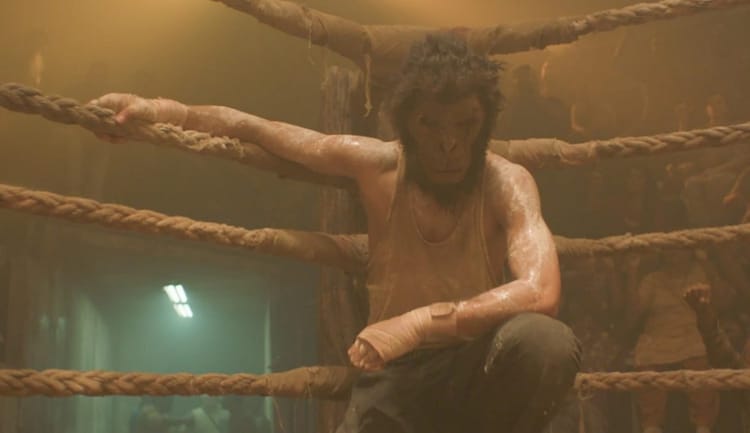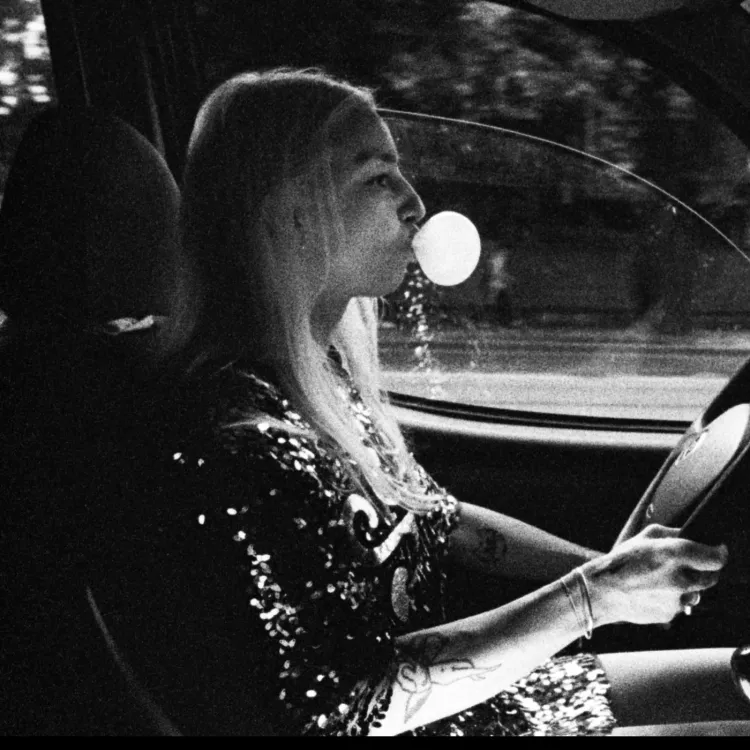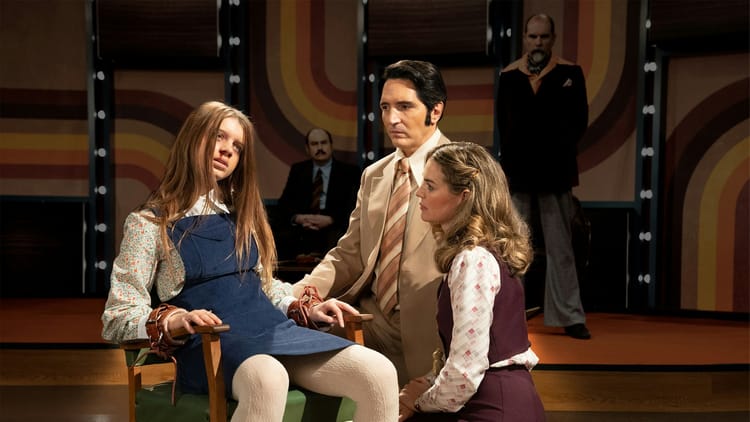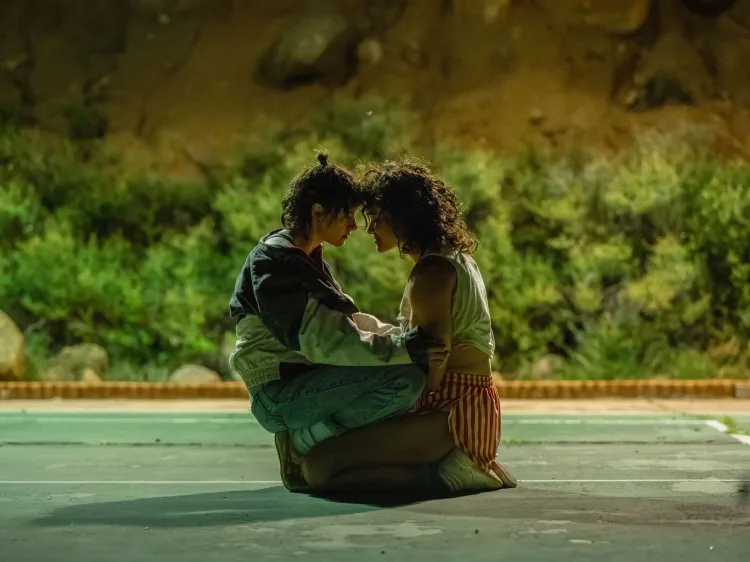In the Heights and Infectious Positivity
Since I watched the London production of In the Heights in 2017, I've listened to the soundtrack hundreds of times. I've got the physical album, a birthday gift from family, and I think I know most of "Benny's Dispatch" by heart. All of this is to say, I was not coming into this movie blind or remotely neutral. I very much wanted this movie to be good, because it has been an incredibly important work for me. In the Heights onstage showed me the storytelling potential of the modern musical, gave me complex non-white characters with compelling journeys, and was an unreservedly earnest story about community and joy. And it's that last one that's had such a lasting impact on me. In the Heights' story is about a lot of things, but underpinning much of it is the idea that even in an unfair and unequal world, there is room for optimism and, occasionally, splashes of magic.
So when Jon Chu, director of Crazy Rich Asians, was announced as the film's director, I had severe doubts. There's a slew of issues with Crazy Rich Asians, but my major one is, well, that it likes the rich Asians. They're kooky, they're eccentric, they're judgmental, but they're just like us! Except crazy rich! More than anything, I was unsure if Chu would capture the heart of In the Heights, which is not about affluence or wealth, but about people and their lives outside of their economic conditions.
It didn't help that I already knew I remember In the Heights with rose-tinted lenses. When you listen to the soundtrack that many times, you start to note some of the plot's flaws, particularly with its younger characters. Sonny, the protagonist's cousin/employee/ward, and Nina, the college girl returning home, both have arcs in the musical that ultimately flatten their agency. Their choices are rendered moot by the musical's plot, forcing their journeys along through convenience. It's more forgiving when you consider the emotional allowances of live musicals; it's par for the course that someone's entire worldview is altered by song. But would that level of characterization be as palatable when not lifted by the liveness of music?
That's why, in spite of my reservations, I was shocked that In the Heights surpassed all my expectations. It manages to bring things I thought would be limited to the stage, like the tightness of this community, to the movie. It isn't limited by its 2005 origins, with some surgical edits and clever additions to the script by screenwriter Quiara Alegría Hudes, making the movie relevant to 2021's political climate. And Jon Chu's penchant for the visually spectacular certainly warrants the film's adaptation. In the Heights is not a lazy cash-grab, leveraging on the monumental success of Lin-Manuel Miranda. Like the musical that came before, it is earnest, sincere, and genuine in wanting to tell a story about people doing their best in a neighbourhood that is changing without them.
That's something special about In the Heights: it is optimistic without being idealistic. It is cognizant of our imperfect world, but doesn't allow that to make it or its characters pessimistic. Nowhere is this more evident than in the film's protagonist, Usnavi, played here with levity and charm by Anthony Ramos. Usnavi desperately wants to return to his homeland of the Dominican Republic, drawn by the greener grass of his parents' home. But Usnavi's journey isn't straightforward. It's scattered with complications: the cost of repairing the fallout from Hurricane Maria, his cousin's reluctance to join him, his lifelong crush on Vanessa. These conflicts make Usnavi compelling and sympathetic; we know what it is like to be pulled in a million directions all at once. And precisely because of that sympathy, we can't make that decision to stay or leave for him. The movie could have made this a simple parable about the dangers of missing the home right in front of you. Instead, Quiara Alegría Hudes re-crafts a Usnavi that we can understand and isn't just a figure in a fairy tale.
That same nuance is carried over to the movie's rewriting of Nina and Sonny. Nina has returned home, disenchanted by her time as a first-generation college student at Stanford. Sonny rejects Usnavi's attempts at bringing him to the Dominican Republic, as the USA is his only home, having been born there and known nothing else. Both characters have the same starting point as they do in the musical, but the movie injects today's political climate into their stories. That may not vibe well with everyone, as some may prefer their art to remain politically neutral. But Hudes and Miranda know that a movie about a neighbourhood of immigrants in New York City today will never be apolitical. Their decision to lean into the worsening status of immigration in the USA lends both Sonny and Nina a layer of depth previously absent in the musical. In theory, it may seem like they would get swallowed in larger political questions. But the film keeps their stories intimate and personal, focusing on these two teenagers and their motivations, rather than the world that surrounds them. And in both cases, it makes for richer, more compelling stories.
And of course, it is still a musical. It isn't just musings on migration or moral quandaries. There's singing, there's dancing, there's a lot of music. And there was a real danger with this many songs and the amount of dancers that In the Heights could end up as a series of disconnected music videos. Chu manages to deftly avoid that comparison by not just delivering imaginative and visually spectacular set-pieces, but by making each of these numbers stay in line with the characters and their journeys. Chu gives us both bombastic, energetic numbers like "96,000" performed by a huge ensemble in a public pool, as well as smaller, more personal sequences like "Paciencia y Fe", with one woman recounting her story of migrating to New York City. And even without meticulous choreography or dramatic shifts in scene, Chu keeps the music sections engaging and full of heart. "Carnaval Del Barrio" is a simple number that oozes with charm, where the neighbourhood gathers to celebrate in spite of the heatwave. They sweat, dance, and laugh together in an effervescent burst of community and compassion. With the songs, Chu keeps us entertained, but it never feels like a distraction. The music exists to bolster one of the story's messages: There is magic in the little things, an infectious joy to be found between the cracks.
When an existing property is adapted, I'm always looking for the reason behind this adaptation. What is this story doing in this form that it wasn't doing before? Profits and accessibility are the easy answer for most movie musicals, but neither of those quite elevate the work's artistic merit. Les Miserables' story wasn't made better by those close-ups, Into The Woods wasn't better because of its stars, and Cats... I'll leave it at that. But In the Heights pushes its story further with this adaptation. Its setting deserves this contemporary update, these characters earn each minute of the screen time, and the musical numbers are enhanced and remixed through film, rather than paltry attempts at filming the stage. In the Heights is far from being a movie relating to my own identity, as a Singaporean far from Washington Heights. But the way this movie confronts its characters' anxieties, their hopes, their fears, their little dreams made it feel like it was speaking to me. And days later, its optimism still lingers in my system.
A NOTE: I didn't feel it was right to bring it up in my review as I don't think it's quite right for me to be weighing on this issue. There has been controversy over the film's casting decisions, particularly with its avoidance of the afro-latinx community in its main cast. As I said, I am not the person who you ought to be hearing from on this. Lin-Manuel Miranda has issued an apology, but you probably don' t need to hear from him either. If you want to read more about this film and colorism, you can try out this Vox article. All of this said, I still very much enjoyed this movie, but again, I'm not part of the community affected by the film's casting mistakes. So it's easy for me to say that I would very much like for us to allow artmakers to learn from their failures rather than be punished completely. I'll leave you to make up your own mind. And I am curious to hear whether this changes either your decision to watch In the Heights or affected your enjoyment: let me know your thoughts!




